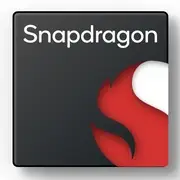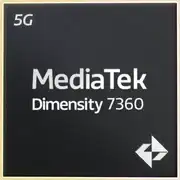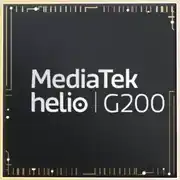Qualcomm Snapdragon 685

Qualcomm Snapdragon 685: Balancing Performance and Affordability in 2025
April 2025
Mid-range smartphones continue to be the most popular in the market, and the key to their success lies in processors that combine decent performance with a reasonable price. The Qualcomm Snapdragon 685 is one such chipset that, despite the release of new models, maintains its relevance due to a successful balance of features. In this article, we will examine what distinguishes this platform, how it performs in real scenarios, and who it is suitable for.
1. Architecture and Process Technology: The Foundation of Stability
Core Structure and Frequencies
The Snapdragon 685 is built on an 8-core architecture with a cluster organization:
- 4 high-performance Cortex-A78 cores with a frequency of up to 2.8 GHz for resource-intensive tasks (games, video editing).
- 4 energy-efficient Cortex-A55 cores with a frequency of 1.9 GHz, handling background processes and battery-saving tasks.
This approach (big.LITTLE) allows for flexible load distribution, avoiding overheating and excessive battery drain.
6nm Process Technology
The chip is manufactured using 6-nanometer process technology from TSMC, which provides:
- A 15% reduction in power consumption compared to 8nm counterparts.
- A compact die size, making integration into slim bodies easier.
- An improved thermal profile— even under peak loads, the processor does not throttle sharply.
Adreno 610 GPU
The Adreno 610 GPU supports Vulkan 1.1, OpenGL ES 3.2, and DirectX 12. Its key features include:
- Frequency of up to 950 MHz.
- Support for displays with a refresh rate of 120 Hz (provided the smartphone's screen supports it).
- Capability to run games at HD+ (1600x720) and Full HD+ (2400x1080) resolutions.
2. Performance in Real Tasks
Gaming
The Snapdragon 685 handles most popular titles at medium settings:
- PUBG Mobile: stable 40 FPS in HD quality.
- Genshin Impact: 25-30 FPS at low settings (performance drops possible in dense scenes).
- Mobile Legends: 60 FPS in Full HD.
For more demanding games (e.g., Honkai: Star Rail), it is recommended to lower the resolution or use graphics power-saving modes.
Multimedia
- Video recording: 4K@30fps or 1080p@60fps (thanks to the ISP Spectra 346).
- Playback: support for HDR10 and H.265/HEVC codecs.
- Audio: Qualcomm Aqstic technology for noise suppression in the microphone and surround sound.
AI Applications
The Hexagon 686 DSP accelerates machine learning tasks:
- Camera modes: automatic portrait retouching, scene recognition.
- Voice assistants: background command analysis without delays.
- Charge optimization: predicting application usage to extend battery life.
Power Consumption and Heating
Thanks to the 6nm process and adaptive power management, smartphones with the SD685 demonstrate:
- Up to 14 hours of mixed-use (social media, music, calls).
- Heating does not exceed 42°C even during 30-minute gaming sessions.
- Support for 30W fast charging (80% in 35 minutes).
3. Built-in Modules: Connectivity and Navigation
Snapdragon X11 LTE Modem
- Download speed: up to 390 Mbps (LTE Cat 13).
- Support for VoLTE and VoWiFi for clear internet calls.
Wi-Fi and Bluetooth
- Wi-Fi 5 (802.11ac) with MU-MIMO for stable connections in multi-user scenarios.
- Bluetooth 5.2 with an enhanced aptX Adaptive codec for wireless headphones.
Navigation
- GPS, GLONASS, Galileo, BeiDou — accuracy within 3 meters.
- Support for dual-SIM with simultaneous operation of two LTE networks.
4. Comparison with Competitors
Snapdragon 680 vs 685
- Gaming: Adreno 610 is 20% faster than Adreno 612 in the SD680.
- Energy efficiency: 6nm vs 8nm — up to 1.5 additional hours of autonomy.
- AI: Hexagon 686 vs Hexagon 686 (same performance).
MediaTek Dimensity 700
- Pros of MediaTek: 5G support.
- Cons: inferior to SD685 in single-thread performance (Geekbench 6: 430 vs 475).
Unisoc Tiger T616
- A budget alternative, but with poorer optimization for games and cameras (AnTuTu 10: ~280,000 points).
5. Use Case Scenarios
Daily Tasks
- Smooth operation with 6-8 apps running in the background (social media, messengers, streaming).
- Instant interface response thanks to Android 15 optimizations.
Advanced Photography
- Support for cameras up to 108 MP (with interpolation up to 200 MP in night mode).
- Modes: macro photography with AI focusing, EIS 3.0 video stabilization.
Gaming
Ideal for casual games (Candy Crush, Among Us) and moderately demanding titles. For hardcore gamers, it is better to choose devices with SD7 Gen 2 or Dimensity 8000.
6. Pros and Cons
Strengths:
- Optimal price-to-performance ratio.
- High energy efficiency.
- Support for modern communication standards.
Weaknesses:
- No 5G support.
- Limitations in resource-intensive games.
- Maximum screen refresh rate is 120 Hz, but not all devices implement it.
7. Practical Tips for Choosing a Smartphone
- RAM: at least 6 GB (8 GB recommended for gaming).
- Storage: UFS 2.2 instead of eMMC 5.1 for faster app loading.
- Display: AMOLED with a refresh rate of 90-120 Hz for smooth animation.
- Battery: at least 5000 mAh for a full day's use.
Examples of devices (2025):
- Xiaomi Redmi Note 13: $279 (6/128 GB, AMOLED 120 Hz).
- Realme 10 Pro: $299 (8/256 GB, 67W charging).
8. Final Conclusion: Who Is the Snapdragon 685 Suitable For?
This processor is a great choice for:
1. Budget-conscious users looking for stability rather than “ultra-features.”
2. Students and teens valuing battery life and the ability to run mobile games.
3. Amateur photographers wanting to take quality photos and videos without professional equipment.
Main Benefits:
- Affordable smartphone prices ($250-350).
- Long lifespan without noticeable slowdowns.
- Versatile for everyday tasks and entertainment.
The Snapdragon 685 confirms that even in the era of 5G and neural network processors, balanced solutions remain in demand. If you are looking for a gadget "without compromises" in its price range—consider devices built on this platform.
Basic
GPU Specifications
Connectivity
Memory Specifications
Miscellaneous
Benchmarks
Compared to Other SoC
Related SoC Comparisons
Share in social media
Or Link To Us
<a href="https://cputronic.com/en/soc/qualcomm-snapdragon-685" target="_blank">Qualcomm Snapdragon 685</a>





